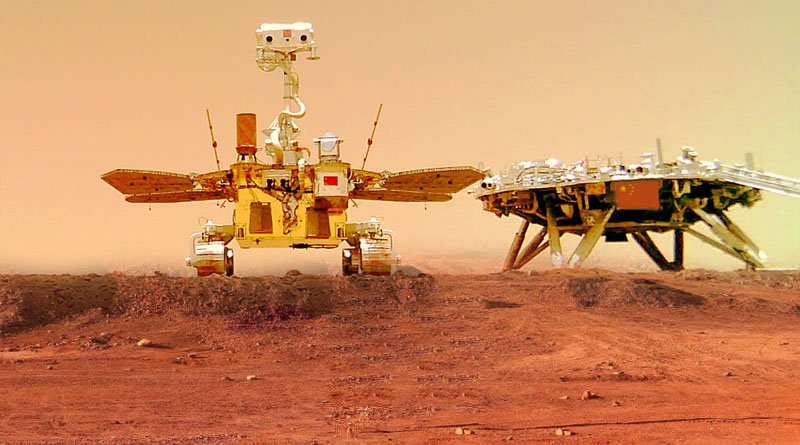NASA study from 2015 revealed that Mars probably had an ocean covering nearly half of the planet’s northern hemisphere 4.3 billion years ago.

A recent study raises the possibility that water may have existed on Mars much more recently than previously thought. Based on information gathered by China’s Zhurong explorer vehicle, the study. In 2021, the rover—an explorer—arrived on Earth.
According to the researchers, warmer regions of Mars that may have been fertile enough to support life showed signs of surface water.
Recent publication in Science Advances of a study with the findings. The study was carried out by a scientific group from China’s Institute of Geology and Geophysics. A component of the Chinese Academy of Sciences is the institute.
Currently, Mars has a dry, chilly climate. But prior research has shown that there was a lot of water on Mars in the past. It is thought that rivers, lakes, and oceans were included in this.
NASA study from 2015 revealed that Mars probably had an ocean covering nearly half of the planet’s northern hemisphere 4.3 billion years ago. Different explanations exist for what made significant amounts of water disappear from Mars.
NASA reported that the most likely explanation is that the liquid escaped as the planet’s atmosphere grew thinner over time. Due to the water’s ability to evaporate, the Martian surface became a frozen desert as a result. According to the space agency, the evaporation took place about 3 billion years ago.
According to the new study, the Chinese rover saw salt-rich sand dunes on the ground. The sand dunes had cracks, crusts, and tiny hills.
These landforms, according to the research team, show that land in the studied areas has frozen and melted before. According to the study, the melting may have taken place as recently as a few hundred thousand years ago. The observations were conducted by the rover in Utopia Planitia, a sizable plain in Mars’ northern hemisphere.
According to the researchers, the dunes were probably formed between 1.4 million and 400,000 years ago, and possibly even more recently. There was probably not much difference between then and now on Mars.
The study’s co-author, Xiaoguang Qin, works for the Institute of Geology and Geophysics. “We think it could be a small amount…no more than a film of water on the surface,” he told The Associated Press (AP). Water in the form of frost or ice was not directly observed by the rover.
However, according to Qin, conditions may still be favourable for the emergence of water at certain times of the year even today, based on computer modelling and observations made by other spacecraft on Mars.
Frederic Schmidt, a planetary scientist, works at the University of Paris-Saclay. He wasn’t involved in the research. But he added that the findings are noteworthy because they show how young the dunes are. According to Schmidt, “This is clearly a new piece of science” for the field.
The scientists asserted that they think melting snow or frost produced tiny openings that were filled with salty water. Small cracks, hard crusty material, and other surface changes that the rover saw were probably caused by this.
The team disqualified wind and carbon dioxide-based frost, which make up the majority of the Martian atmosphere, as potential causes.
Now, according to Mary Bourke, the rover has given “evidence that there may be a wider distribution of this process on Mars than previously identified.”
She is a specialist in Mars geology at Ireland’s Trinity College Dublin. She continued by saying that even though the evidence points to minor amounts of water, it might be crucial in identifying environments that might support life.
The discoveries were made public days after China acknowledged that its Zhurong explorer has not awakened since entering hibernation for the Martian winter almost a year ago. Chinese space officials have stated that the rover’s solar equipment is probably dust-covered, blocking the sun and preventing the explorer from receiving power.
Space officials reported that Zhurong explorer had travelled 1,921 metres and spent 358 days exploring the Martian surface before going silent. Officials added that this operation lasted much longer than the rover’s intended three-month duration.
